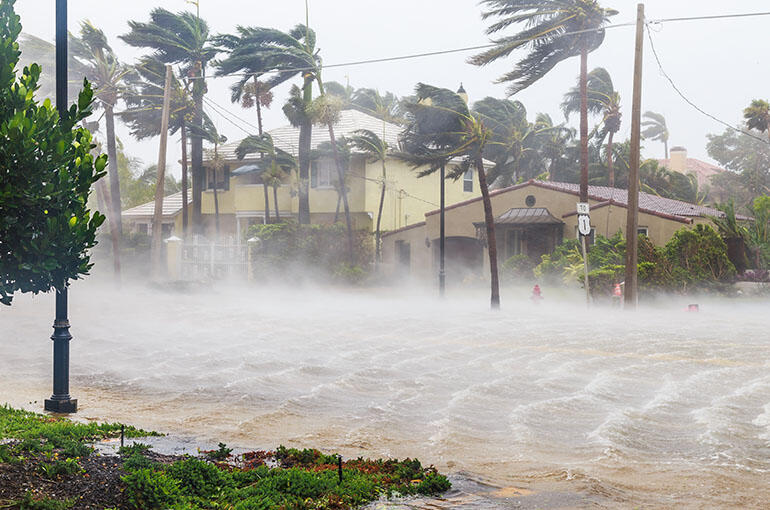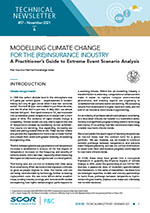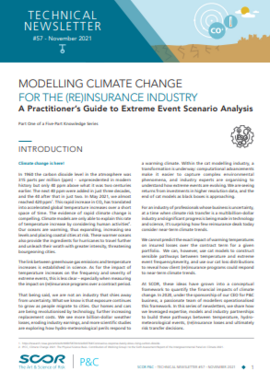Modelling Climate Change for the (Re)Insurance Industry
A Practitioner’s Guide to Extreme Event Scenario Analysis
28 octobre 2021

Climate change is here!
The link between greenhouse gas emissions and temperature increases is established in science. As for the impact of temperature increases on the frequency and severity of extreme events, this is less clear – especially when measuring the impact on (re)insurance programs over a contract period.
That being said, we are not an industry that shies away from uncertainty. What we know is that exposure continues to grow as people migrate to cities. Our homes and cars are being revolutionised by technology, further increasing replacement costs. We see more billion-dollar weather losses, eroding industry earnings, and more scientific studies are exploring how hydro-meteorological perils respond to a warming climate. Within the cat modelling industry, a transformation is underway: computational advancements make it easier to capture complex environmental phenomena, and industry experts are organising to understand how extreme events are evolving. We are seeing returns from investments in higher resolution data, and the end of cat models as black boxes is approaching.
For an industry of professionals whose business is uncertainty, at a time when climate risk transfer is a multibillion-dollar industry and significant progress is being made in technology and science, it’s surprising how few reinsurance deals today consider near-term climate trends.

We cannot predict the exact impact of warming temperatures on insured losses over the contract term for a given portfolio. We can, however, use cat models to construct sensible pathways between temperature and extreme event frequency/severity, and use our cat loss distributions to reveal how client (re)insurance programs could respond to near-term climate trends.
At SCOR, these ideas have grown into a conceptual framework to quantify the financial impacts of climate change. In 2020, under the sponsorship of our CEO for P&C business, a passionate team of modellers operationalised this framework.
This technical newsletter is the first of a five-part knowledge story.
In this series of newsletters, we share how we leveraged expertise, models and industry partnerships to build these pathways between temperature, hydro-meteorological events, (re)insurance losses and ultimately risk transfer decisions.
